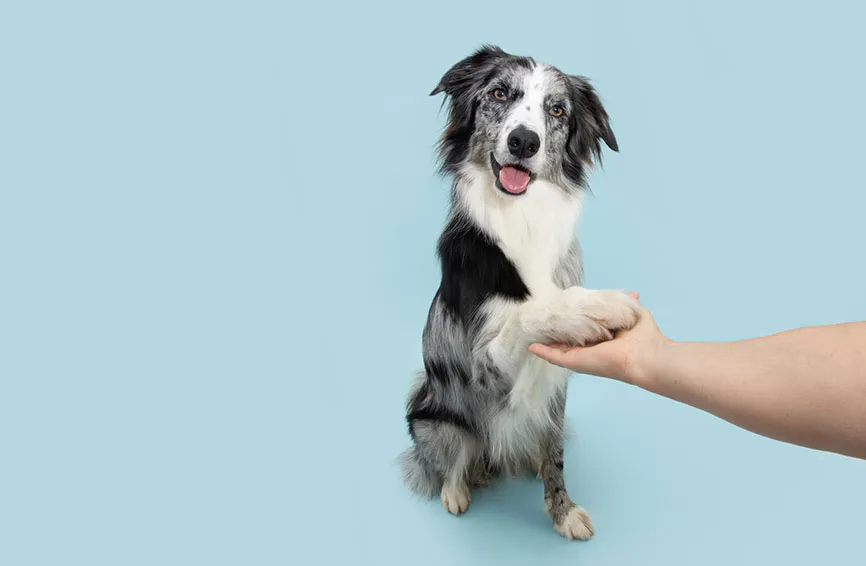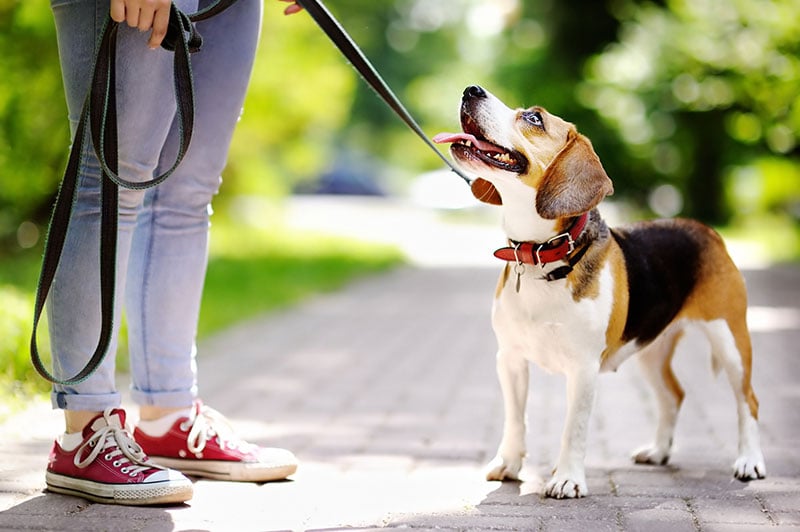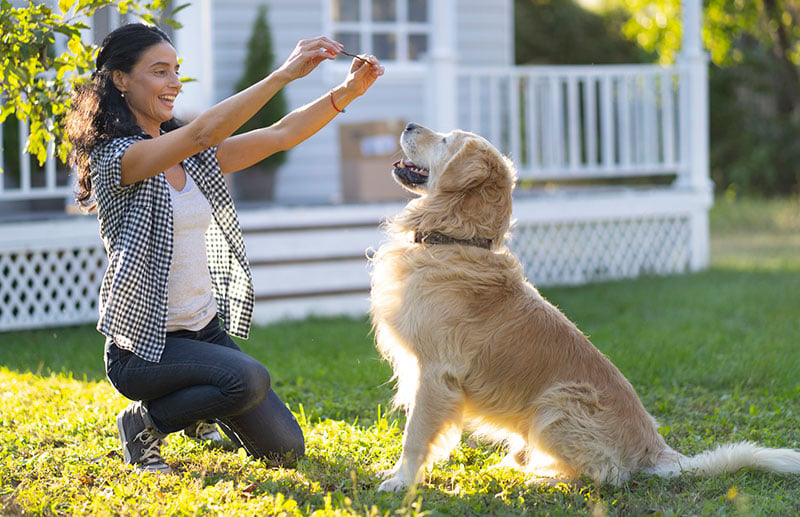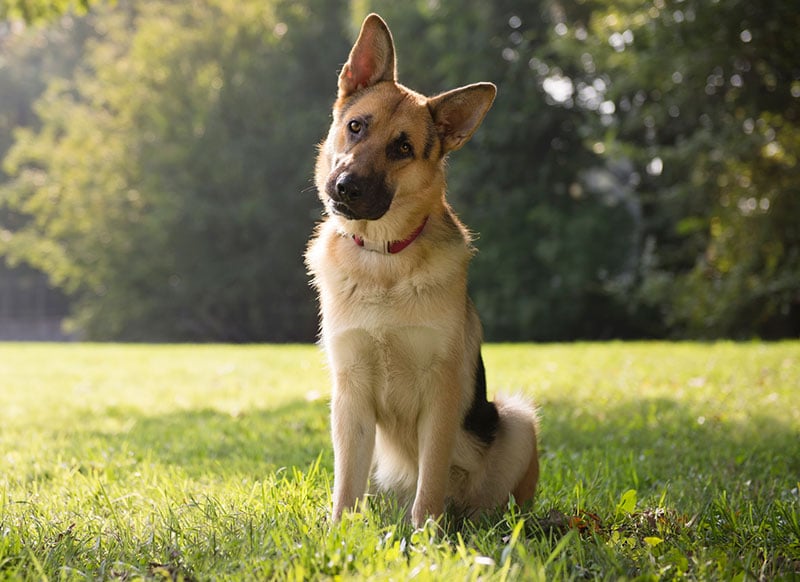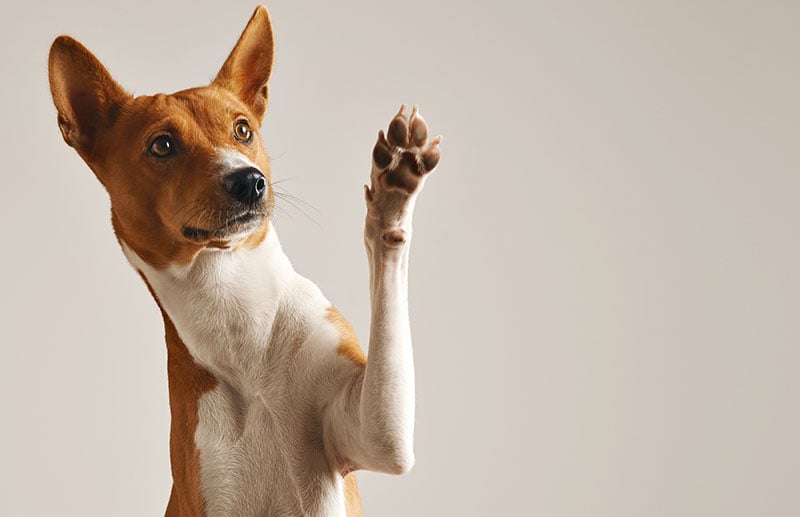Key Takeaways
- When a dog views you as their leader, they will respect your space, listen, and respond when you ask them to do something.
- You can teach your dog to respect and listen to you by showing them you are the leader.
- Simple techniques such as not rewarding demanding behavior, walking through the door first, and creating structure and rules, will all help your dog to be respectful.
Table of Contents
Does your dog ignore you when you ask them to do something? Do they constantly pester you for attention? Do they bolt out the door ahead of you when it’s time to go for a walk?
If so, your dog may love you, but they don’t respect you as their leader. And if they don’t trust you, it could lead to behavioral issues, make training challenging and increase their fear, or anxiety.
What does it look like when a dog respects you?
When a dog views you as their leader, they will respect your space, listen, and respond when you ask them to do something. Let’s break it down:
Respecting your space – When called to you for affection, they will come immediately and show good manners, not jumping on you or grabbing your clothing. When you are busy and unable to focus on them, they will be relaxed and easily entertain themselves and will not be demanding your attention.
Listening and responding to you
- If they are barking at passersby either in your home or yard, when you address it, they will stop.
- They will wait for you to go through the door first when taking them outside and will not try to bolt ahead.
- They will patiently wait for their food at feeding time, rather than demanding it by nudging you, barking, or jumping up.
- Your dog will walk beside you, rather than pulling and leading you out on a walk.
Other signs your dog respects you
- Dogs will live in harmony; there will be no bossiness or controlling behavior towards family members or other dogs in the home.
- When you leave your house, your dog is calm, and when you return home, your dog is relaxed and doesn’t come rushing over to you.
How to make your dog respect you: Actions you can take
Give them affection and attention on your terms – Call them to you when you have the time and desire to interact with them. Teaching your dog that you ‘own your space’ is essential to training your dog to respect you. Give them as much love and affection as you like, just on your terms, not theirs.
Look and talk to them only at certain times – Looking at your dog and talking to them is like starting a conversation. Only make eye contact and speak to your dog when you want to give them a snuggle, when playing with them, or on a walk.
Don’t reward the demanding of attention – If your dog comes over demanding attention from you, it’s better to push them away, with calm, loving energy, without saying anything or looking at them. They will learn to stop nudging, barking, or staring at you because it doesn’t work. They will know that attention is on your terms, not theirs.
Train them to wait for you to go through the door first – Showing them you are the leader at the threshold will affect their reaction when out on a walk, their reaction to visitors, and their response when you address the alert barking.
Address alert barking like a leader – If your dog is barking to alert you of danger, let them know you are in charge and appreciate their alert, but you are responsible for assessing the potential threat and they can trust you will keep them safe. Their only job is to alert you; you decide if it’s a danger or not.
Work on recall training – It’s best to practice recall training first in your home, with minimal distractions, and as they learn to sit and stay, gradually increase the distance between you when calling them. Once they are easily coming when called in the house and can stay focused, then progress to your fenced yard, where there are more distractions, then eventually away from home. When working on recall away from home, practice with them on a long leash, and if they don’t respond when called, reel in the leash to restrict their freedom. When calling your dog to you, ask them once, don’t beg them to come. Then practice some heel training with them for a few minutes. Then ask them to sit, release them, and try again. Keep them leashed until they have 100% recall, as safety should always be a priority.
You make the rules of the game – Create structure when you play games with your dog to teach them you establish the rules of the game. Dogs learn better with rules, as these help them learn what’s expected and make it easier for them to ‘get it right’. Once they understand how to play, you can all have fun!
Leaving and returning home – When leaving your house without your canine companion, don’t make a fuss; just go. When returning, wait until they have stopped trying to get your attention for a few minutes before saying hello. If your dog trusts and respects you, they will not follow you to the door or come bounding over to investigate you when you return home. Dogs aren’t rushing up to say, “Hi, I missed you!”, they are running over to assess where you have been and if you are OK. Once you are a respected leader, they won’t feel compelled to rush over and check on you because they trust you to take care of yourself.
Work on heel training – Work with your dog on walking nicely beside you. Start by practicing in the comfort and safety of your house, with minimal distractions to make it easier for them to ‘get it right’. Then continue training in your yard, and finally work on heeling away from home. If your dog respects you on walks, you won’t need to use a pinch collar, or any other device to control them. The leash should be slack, with your dog walking beside you, following your lead, so that you can both enjoy the walks.
What actions should you avoid if you want your dog to respect you?
Constantly talking to them – Avoid looking and speaking to your dog repeatedly while at home with them. Make the communication purposeful, such as when you are giving them affection or playing with them. If you talk to your dog all the time, it confuses them and causes them to feel like you are the equivalent of ‘the puppy’ they need to take care of. Dogs view us either as the leader or a puppy, and if we are talking to them without giving a request, like “come,” it’s like asking a person for help all day long, without explaining what you need help with. This causes stress and convinces dogs to view us as their puppy or a two-year-old child, and they can’t relax.
Correcting them by giving them attention – If you say “no” to your dog and look at them to stop jumping on you, you encourage the behavior because you are making eye contact and talking to them, which is what they want.
Letting them go through the door first– If you allow your dog to bolt through the door ahead of you, they don’t respect you or believe you are in charge. The leader always goes through the door first to assess any potential threats, then the rest of the pack follows.
Yelling at your dog when they are barking to alert you – If you say “No bark” and get frustrated when your dog is barking, they will not respect your response. You are not acting calmly, which means you don’t know how to handle the potential danger.
Repeating the same ‘command’ to get a response – If you need to repeat yourself several times when asking your dog to do something, it contributes to tuning you out when you ask the first time.
Allowing your dog to demand attention from you – If your dog whines, barks, paws at you, or nudges you to get affection, they don’t respect your personal space, and it affects their listening to you in other ways, areas of training and leadership. The best response is to ignore them.
Playing games on their terms – Dogs who make up their own rules or are demanding when it comes to playtime believe they control the games, therefore not respecting you. They should be looking to you for guidance or expectations. If they don’t play by your rules, end the game.
Saying goodbye to them as you leave the house – When leaving your home, if you give them affection and say goodbye, it can cause stress for your dog and contribute to separation anxiety. Essentially, you are communicating to your dog that you are a puppy who is incapable of knowing how to handle the big world outside and that you are worried about survival. Leaders just go; they don’t ask for permission, feel guilty or check in with everyone else because they are trusted to make good decisions.
Allowing your dog to pull you on walks – If your dog is leading you when on walks, they don’t respect you to make decisions when away from home. This also contributes toward dogs lunging and being reactive on walks because they believe they need to assess and deal with threats and protect both of you.
What attitudes or emotions do dogs respond well to?
Patience – If you are getting frustrated with your dog as you are teaching them, they will respond to your stress, and it can cause anxiety and make it difficult for them to focus and learn.
Calm energy – Focusing on being calm and grounded is so essential because our dogs are tuned into our energy and emotions, and if we aren’t calm, we can’t expect them to be calm. Dogs reflect our emotions back to us in their behavior.
Positive expectations and kindness – It’s key to expect the best from your dog, as dogs are very aware of our expectations and want to live up to them, just as children do. Think positive and always encourage the desired behavior with kind, loving responses. Dogs don’t respond well to harsh, stern tones and always learn better when talked to in a friendly voice, just as we do. Even if a dog cooperates when spoken to sternly, do you want your relationship built on fear or trust and respect?
Understanding when they make a mistake – Give your dog the same grace you would like while learning. Don’t expect them to read your mind and automatically know what to do without guidance. They are bound to make mistakes; it’s all part of the learning process. Don’t scold them; remember that they are trying their best and want to please you. Short training sessions are always best when teaching your dog something new, and end it on a good note.
Why do these techniques work?
Despite being family members, dogs don’t understand most human language. While they can learn certain words and phrases due to repetition and training, remember that their vocabulary is limited. If you try to teach them by explaining everything as you would to a child, it confuses them and contributes to behavioral issues.
If you can learn how to effectively communicate and honor a dog’s natural instincts and give them boundaries in a way that makes sense to them, it helps them learn and gives them a sense of relief. Dogs then feel understood, learn quickly, and know that they can count on us to make critical decisions.
If we don’t step up to the leadership role from a dog’s perspective, they believe their only option is to take on the responsibility themselves, even if it is stressful for them. Without a competent leader in a pack, there is chaos and dogs see that as dangerous. If you act like a puppy in your dog’s mind, they won’t respect you or listen. Despite living in our world, dogs are another species, which is why humanizing them causes so many issues.
If your dog is everything to you, then you should consider dog insurance to protect them from unexpected illnesses and accidents. Start by getting a quote.
